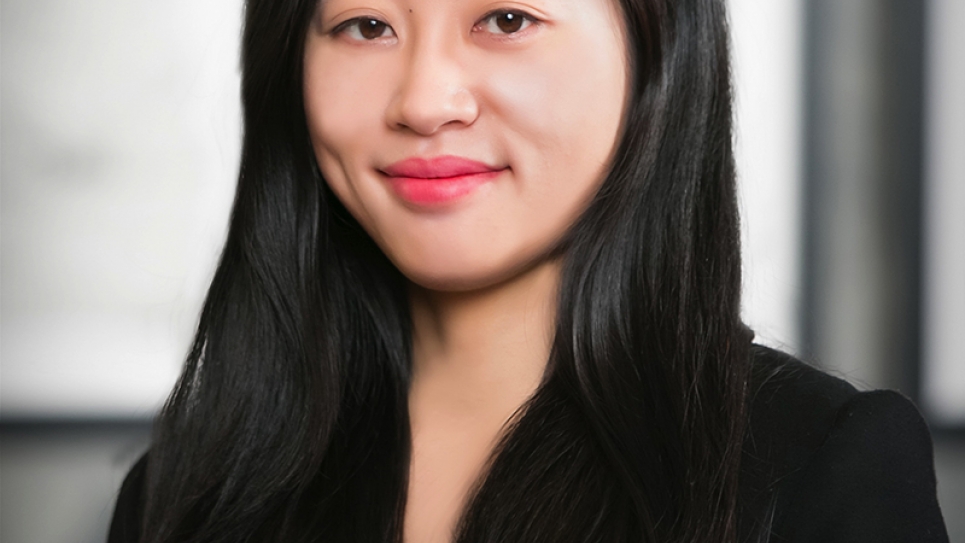
Q&A with Ying Li, ALCF's first Margaret Butler Fellow
The Argonne Leadership Computing Facility (ALCF) has named University of Southern California (USC) doctoral student Ying Li as its first Margaret Butler Fellow. Li will join the ALCF this fall to conduct simulations aimed at advancing batteries and fuel cells using Mira, the ALCF’s IBM Blue Gene/Q supercomputer.
The Margaret Butler Fellowship in Computational Science honors the lifetime achievements of Margaret Butler, a pioneering researcher in both computer science and nuclear energy. Butler served as the director of Argonne’s National Energy Software Center and was the first female Fellow of the American Nuclear Society.
A pioneer in her own right, Li is part of a USC research team that has executed some of the largest reactive force-field molecular dynamics simulations run on massively parallel computers, including Mira, as part of an INCITE project led by her advisor, professor Priya Vashishta. Li will graduate from USC this summer with a doctorate in materials science and a master’s degree in computer science.
We asked Li about her new position at Argonne, the importance of computational science, and how she plans to use Mira to study hydrogen production and storage for fuel cells and batteries.
What drew you to apply for the Margaret Butler Fellowship?
Margaret Butler was a remarkable scientist who dedicated her long career to advancing computational science. Much like Mrs. Butler, I favored mathematics, statistics, and other analytical courses as a student. And I very much admire her spirit of encouraging women in science and for creating opportunities for females in the field of computing.
When I attended an ALCF user workshop in the summer of 2012 with my advisors, I really enjoyed the research environment and the intelligent vibes at Argonne. I got the chance to meet and interact with the ALCF team to ensure our code worked effectively and efficiently on Mira. I felt that this fellowship was a perfect opportunity for me to develop and further my career in computational science and carry over the mission of being a leader for women in science.
What excites you most about this opportunity?
There are three aspects of the fellowship I’m particularly excited about. First, this opportunity will provide a platform for me to become more knowledgeable about high-performance computing, especially working with one of the world’s fastest supercomputers, Mira. With a further perspective, this knowledge can be translated to the next generation of exascale supercomputing as well. Secondly, I will have the chance to work alongside some world’s top experts in supercomputing and an opportunity to collaborate on many interesting projects with the excellent multidisciplinary research teams at Argonne. And thirdly, I can follow the influence of Argonne and devote myself to resolving the safe, clean, and renewable energy production and storage issues that face our society.
Can you provide a brief description of your research proposal?
My research proposal is focused on producing hydrogen on demand from water reacting with metallic alloy particles. Lithium-aluminum alloy nanoparticles react with water to produce hydrogen, where the dissolution of lithium into water produces a corrosive basic solution that helps to break up the oxide layer of aluminum. I want to explore the mesostructure of the oxide products and the diffusion of hydrogen and water through the reaction surface. It is relevant to hydrogen storage for fuel cells and for lithium-ion batteries.
How will you use Mira?
I will use Mira to perform million-to-billion-atom reactive force-field molecular dynamics (MD) simulations. To enable reactive MD simulations and data analysis encompassing large spatial (micrometer) and temporal (nanosecond) scales, I will work on developing two computational techniques. First, I will extend the hybrid parallelization of MPI code and multithreading scheme on Mira. I will seek further parallelization using a GPU and deep halo scheme to reduce the data transfer between memories. For the second technique, I will develop in situ data analysis methods on Mira for detecting complex reaction pathways. By mapping the MD trajectory data to a time series of graphs, I have developed a connected-component analysis (CCA) code based on breadth-first search to identify reaction products. I will extend this analysis by adding temporal self-edges, so that CCA of the spatiotemporal graph will reveal reaction pathways.
What inspired you to pursue a career in computational science?
Combining my background in physics, computer science, and materials science, I feel that computational science presents a way to solve any fundamental question we encounter in science and to seek solutions that will improve our qualify of life. With the more and more advanced computers becoming available, computing is becoming the third critical scientific approach, in addition to experiment and theory. Supercomputers can solve problems at a scale and pace beyond any experiment. When designing a battery system, advanced computing provides the kind of power needed to develop innovative battery concepts in less time and with fewer costs. Computational science will allow us to do things not possible before and to simulate things we cannot examine in the real world.
How would you explain what you do to a sixth grader?
I would approach it from the perspective of energy usage, like how to make an iPad battery last longer without recharging it. I use computers to try to find ways to prolong battery life through better design. By simulating batteries in a virtual world, I am able to obtain data that tells me that design A is better than design B without having to conduct expensive and time-consuming experiments.
And finally, what do you like to do outside of work?
I volunteer for the USC WiSE (Women in Science and Engineering) program from time to time and assist in welcoming prospective students to the USC Viterbi Engineering School. In my spare time, I am a dedicated marathon runner and amateur skier, and I love to play musical instruments.
